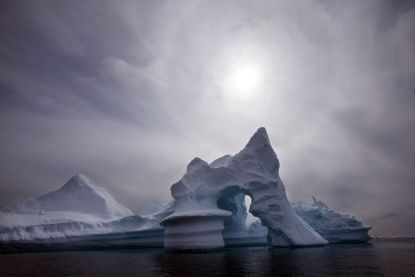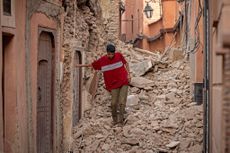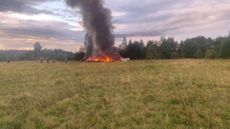The ozone layer appears to be successfully repairing itself


Here's proof that when countries work together, good things happen.
In 1985, scientists discovered a huge hole in the ozone layer above the South Pole. The ozone layer absorbs most of the sun's ultraviolet radiation, which can cause skin cancer and damage crops. Man-made chemicals called chlorofluorocarbons (CFCs) eat at the ozone layer, and in the late 1980s, 180 countries signed the Montreal Protocol, agreeing to phase out CFCs in order to prevent additional holes from forming.
A new United Nations report says that the ozone layer is healing itself, and by the 2030s, the Northern Hemisphere could be fully repaired, with Antarctica following in the 2060s. The problem is not entirely solved — some parts of the ozone layer are not yet repaired, and scientists are concerned some unregulated chemicals that contain chlorine could slow down the healing process — but this is still "really good news," Paul Newman, the report's co-chairman and chief Earth scientist at NASA's Goddard Space Flight Center, told BBC News. "If ozone-depleting substances had continued to increase, we would have seen huge effects. We stopped that."
Subscribe to The Week
Escape your echo chamber. Get the facts behind the news, plus analysis from multiple perspectives.

Sign up for The Week's Free Newsletters
From our morning news briefing to a weekly Good News Newsletter, get the best of The Week delivered directly to your inbox.
From our morning news briefing to a weekly Good News Newsletter, get the best of The Week delivered directly to your inbox.
Sign up for Today's Best Articles in your inbox
A free daily email with the biggest news stories of the day – and the best features from TheWeek.com
Create an account with the same email registered to your subscription to unlock access.
Catherine Garcia is night editor for TheWeek.com. Her writing and reporting has appeared in Entertainment Weekly and EW.com, The New York Times, The Book of Jezebel, and other publications. A Southern California native, Catherine is a graduate of the University of Redlands and the Columbia University Graduate School of Journalism.
-
 'Republicans want to silence Israel's opponents'
'Republicans want to silence Israel's opponents'Instant Opinion Opinion, comment and editorials of the day
By Harold Maass, The Week US Published
-
 Poland, Germany nab alleged anti-Ukraine spies
Poland, Germany nab alleged anti-Ukraine spiesSpeed Read A man was arrested over a supposed Russian plot to kill Ukrainian President Zelenskyy
By Peter Weber, The Week US Published
-
 Today's political cartoons - April 19, 2024
Today's political cartoons - April 19, 2024Cartoons Friday's cartoons - priority delivery, USPS on fire, and more
By The Week US Published
-
 Puffed rice and yoga: inside the collapsed tunnel where Indian workers await rescue
Puffed rice and yoga: inside the collapsed tunnel where Indian workers await rescueSpeed Read Workers trapped in collapsed tunnel are suffering from dysentery and anxiety over their rescue
By Sorcha Bradley, The Week UK Published
-
 More than 2,000 dead following massive earthquake in Morocco
More than 2,000 dead following massive earthquake in MoroccoSpeed Read
By Justin Klawans Published
-
 Mexico's next president will almost certainly be its 1st female president
Mexico's next president will almost certainly be its 1st female presidentSpeed Read
By Peter Weber Published
-
 North Korea's Kim to visit Putin in eastern Russia to discuss arms sales for Ukraine war, U.S. says
North Korea's Kim to visit Putin in eastern Russia to discuss arms sales for Ukraine war, U.S. saysSpeed Read
By Peter Weber Published
-
 Gabon's military leader sworn in following coup in latest African uprising
Gabon's military leader sworn in following coup in latest African uprisingSpeed Read
By Justin Klawans Published
-
 Nobody seems surprised Wagner's Prigozhin died under suspicious circumstances
Nobody seems surprised Wagner's Prigozhin died under suspicious circumstancesSpeed Read
By Peter Weber Published
-
 Western mountain climbers allegedly left Pakistani porter to die on K2
Western mountain climbers allegedly left Pakistani porter to die on K2Speed Read
By Justin Klawans Published
-
 'Circular saw blades' divide controversial Rio Grande buoys installed by Texas governor
'Circular saw blades' divide controversial Rio Grande buoys installed by Texas governorSpeed Read
By Peter Weber Published